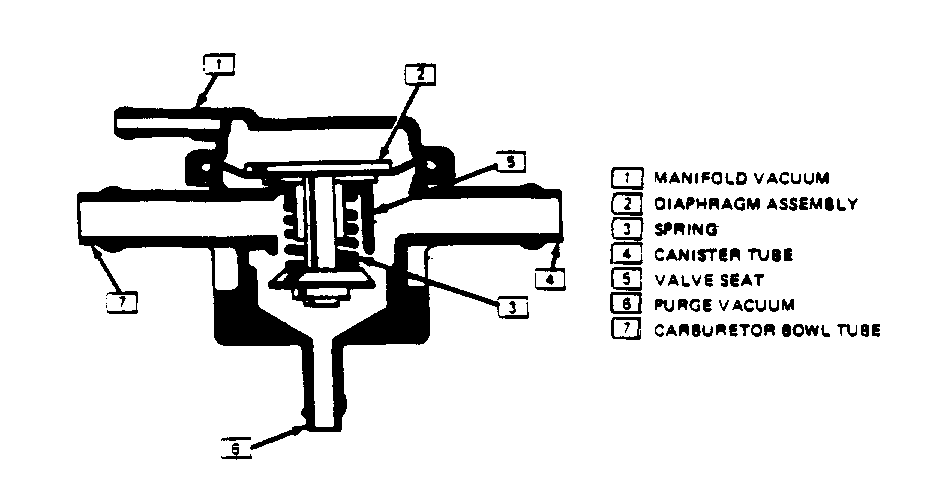REVISED TESTING PROCEDURE CANISTER CONTROL VALVE

Model and Year: 1982-84 CAPRICE, CAMARO, MONTE CARLO, AND MALIBU WITH EITHER 3.8L V6, 4.4L V8, 5.OL V8 OR 5.7L V8
This bulletin superseded 83-I-29 issued in December, 1982.
When diagnosing a condition such as rough idle, rich acceleration, or lean idle duty cycles (indications of rich carburetion), the following procedure should be followed for diagnosis of a canister control valve:
NOTICE: The canister control valve must be removed from the vehicle to perform this test.
1. Apply a short length of 3/8" (9.5mm) I.D. hose to the carburetor bowl tube of the canister control valve (see illustration) and blow into it. Air should pass out through the canister tube. If it does not, replace the canister control valve.
2. Use a hand vacuum pump to apply vacuum (15" Hg or 51 kPa) to the PCV tube. The diaphragm should hold vacuum for at least twenty (20) seconds. If it does not, replace the canister control valve.
3. With vacuum still applied, again try to blow through the hose into the carburetor bowl tube. No air should flow from the canister tube. If it does, the lower valve assembly is not sealing correctly, and the canister control valve must be replaced.
4. Remove the short hose from the carburetor bowl tube, and install it on the canister tube. Move hand vacuum pump to apply vacuum (15" Hg or 51 kPa), to the control vacuum tube, permitting vacuum to raise the upper diaphragm. The diaphragm should hold the vacuum for at least twenty (20) seconds. If it does not, replace the canister control valve. Seal the carburetor bowl tube with a rubber cap or finger, and while vacuum is still being applied to the control vacuum tube, try to blow through the hose connected to the canister tube. Air should pass freely from the PCV tube. If not, the canister control valve must be replaced.

General Motors bulletins are intended for use by professional technicians, not a "do-it-yourselfer". They are written to inform those technicians of conditions that may occur on some vehicles, or to provide information that could assist in the proper service of a vehicle. Properly trained technicians have the equipment, tools, safety instructions and know-how to do a job properly and safely. If a condition is described, do not assume that the bulletin applies to your vehicle, or that your vehicle will have that condition. See a General Motors dealer servicing your brand of General Motors vehicle for information on whether your vehicle may benefit from the information.
